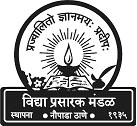Indus
Valley links traced to Qatar
Thursday, March 27, 2008 (Bahrain Tribune)
Doha,
a burial site of Indus Valley traders, estimated to be 5,000
years old, has been unearthed on the north-west coast of Qatar,
strengthening the theories of commercial exchange between the ancient
peoples of the Middle East and the subcontinent.
The materials found at a graveyard at Al Ruwaida, a few kms to the
west of Ruwais, belonged to people of the Indus Valley civilisation
which flourished around 3,000 BC, Qatari explorer and fossil
collector Mohamed Ali Al Sulaiti told Gulf Times.
"They mostly traded in brass, brought in porcelain objects, probably
procured from China, to sell in Qatar, Bahrain, Oman and Abu Dhabi.
They mined copper ore in the Buraimi mountains in Oman and probably
smelted it to make brass in Qatar," the amateur archaeologist said,
referring to fragments of brass, an alloy of copper and zinc found in
Ruwaida. "Though the graveyard gets submerged during high tides
and
much of the remains might have been washed away, we can piece
together some aspects of their life and culture," he said.
The startling discoveries include a small brazen pot with a smaller
porcelain vase inside containing a molar. "The tooth could have
belonged to a chieftain or a high priest. They used to save such
relics of kings and religious leaders."
The discovery of carbonised rice shows people used to bury food items
along with the bodies of their dear ones," the US-educated engineer
said.
According to him, the Gulf region is dotted with the remnants of the
settlements since the Indus Valley civilisation as findings in Mannar
in Abu Dhabi and Kuwait show.
Ruwaida also yielded glass bangles, inlaid with lacquer paintings and
parts of necklaces and shells used as ornaments. "The items are
similar in style and materials used by the inhabitants of the Indus
Valley. The `ox' figured prominently on the shards of pottery and
coins recovered from the Qatari site. We also found brass needles in
a grave."
The Indus Valley civilisation was based at Mohenjodaro in Sindh and
Harappa in Punjab in Pakistan.
The Indus Valley people used the Arabian Sea to journey beyond the
Arabian world through the Arabian Gulf and the Red Sea right into the
ancient civilisation of Mesopotamia and Egypt. It is these voyages
that gave the Indus land its earliest name of Meluhha (sailor
country) in the Babylonian records.
Archaeologists have found the remnants of a `Meluhhan' village in
ancient Mesopotamia (Iraq). The Indus Valley people traded seals,
painted pottery and lapis lazuli in exchange for copper, tin and
other items from the Gulf states. The Baloch and Sindh ports also
traded with ports in Ethiopia, Somalia, Zanzibar, Kenya and Tanzania.
These traders established encampments at certain points on their
regular routes.
Al Sulaiti has also found sites of Roman settlements in the region,
including Qatar. "The Romans had distinctive art and architecture
and
their colonies are easy to identify. I have found remains of Roman
settlements in Fuwairat, Jassasiya and Umm Almah – all in the north
of Qatar."
http://www.bahraintribune.com/ArticleDetail.asp
